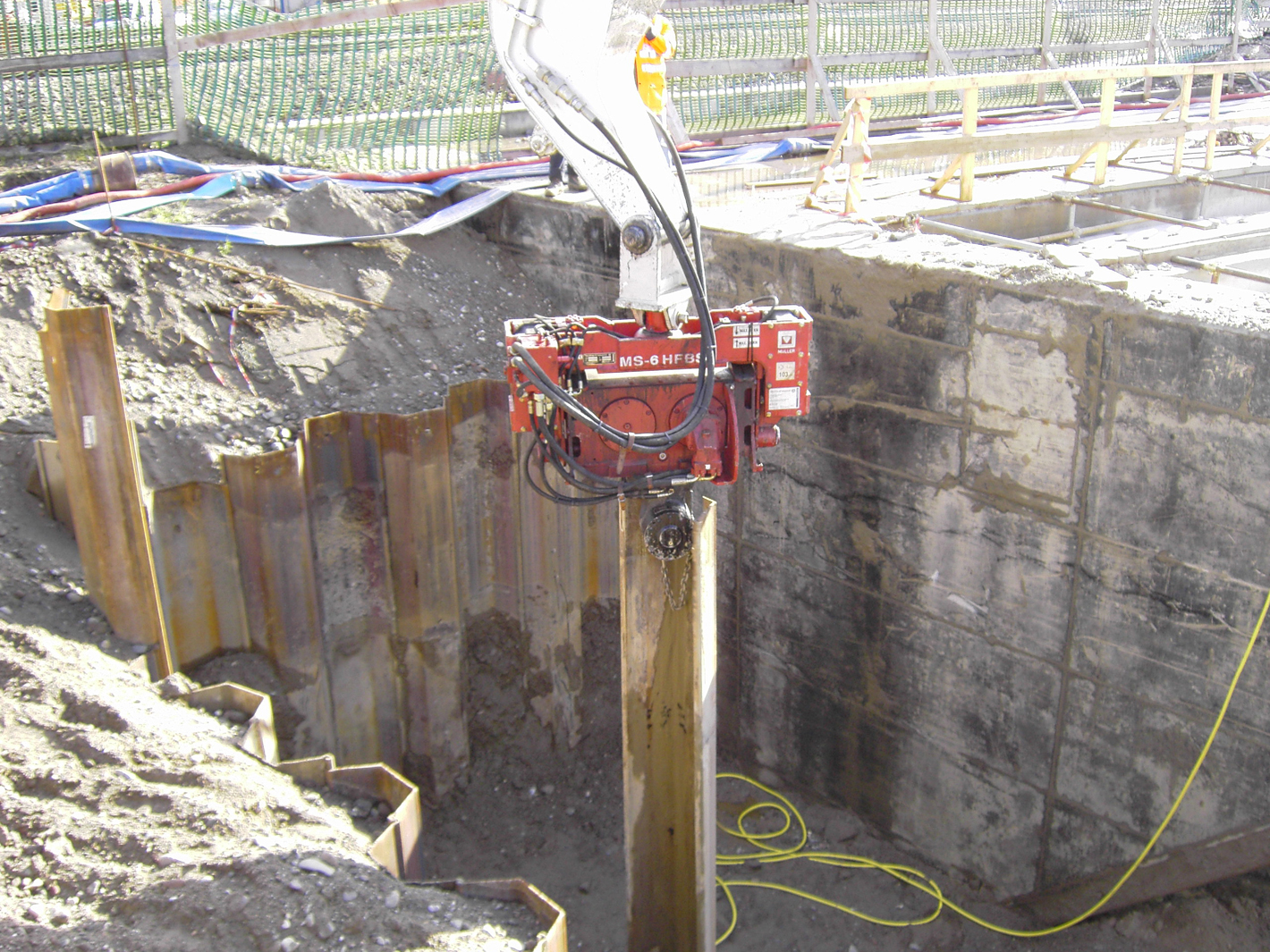Timely maintenance guaranteed
On construction sites, machines several meters large ram heavy steel planks and girders into the ground by generating targeted vibrations. In future, a new electronics system will monitor the expensive tools, indicate when they need servicing and thus prolong their useful life.
A steel plank weighing more than 300 kilograms sinks into the ground under continuous vibrations, rammed into the earth by what is known as a construction vibrator. Unbalanced masses inside the machine rotate to produce strong targeted vibrations. These are transferred to the steel plank and greatly weaken the soil – “liquefy” it, so to speak. The plank sinks on account of its own weight. Several such planks can be joined together to make building pits, for example, or steel quay walls in ports. The machines are very expensive, so small building companies usually hire them from rental firms as and when they need them. Construction vibrators have to endure heavy loads and require regular servicing, during which a technician changes the oil and replaces the seals. The longer a machine has been in action, the more frequently it has to be serviced – much like a car, which has to be taken for an inspection after clocking up a certain mileage. However, rental companies can only make a rough estimate as to how long a machine has been in use overall with its customers, and when it needs to be serviced next. Should they fit in an extra maintenance inspection before renting it out to the next customer? An electronic guard developed by the Fraunhofer Institute for Microelectronic Circuits and Systems IMS in Duisburg will answer this question in future. “It keeps track of how many hours the machine is in operation,” explains IMS project manager Frederic Meyer. The hour counter is housed in a small box measuring five by seven centimeters, can be mounted on any construction vibrator, and oscillates at the same frequency as the machine. “At one-minute intervals, the electronics determine whether the machine is currently vibrating and, if so, at what frequency. This is done using an acceleration sensor and an internal clock,” says Meyer. A technician reads out the counter via a radio link and can thus see whether he needs to service the machine before it is delivered to another customer. The electronics also monitor the temperature of the construction vibrator. This is necessary, for if the machine is over-used, it runs hot and wears out more quickly. “Temperatures of 85 degrees Celsius and above can damage the seals,” Meyer explains. In future, the electronic guard will record any threateningly high temperatures that occur and will warn the technician, who can then organize an additional inspection. The researchers have already successfully tested the first prototype, and the system is currently being put through its paces by their customer, ThyssenKrupp GfT Tiefbautechnik.
